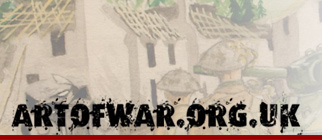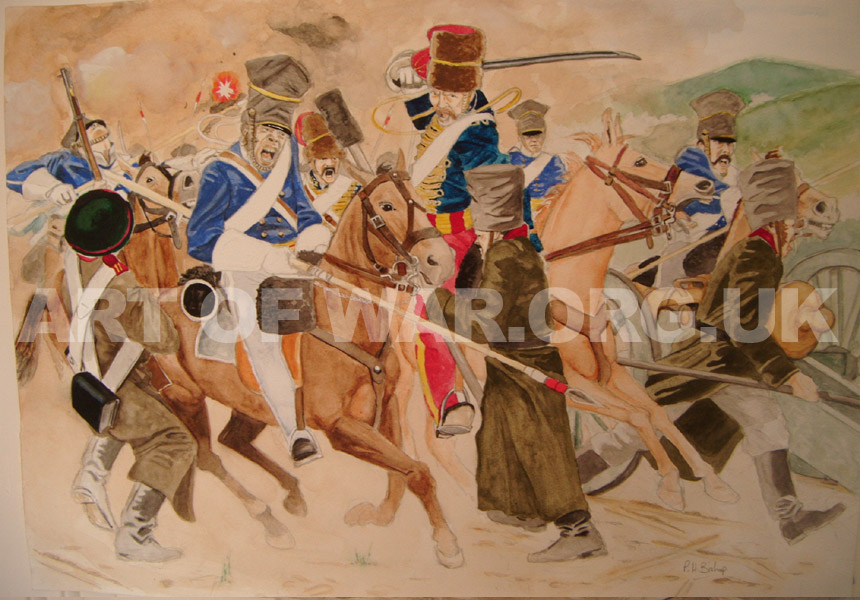      |
||||
| Welcome to www.artofwar.org.uk | ||||
Charge of the Light Brigade |
||||
 |
||||
Charge of the Light Brigade The greatest spectacle but the most tragic event of the Crimean war took place at the Battle of Balaclava, the charge of the Light Brigade. After the French and British victory at the battle of Alma the allied forces headed south toward the Russian citadel of Sebastopol. The Battle of Balaclava was an attempt by the Russian army to cut the Woronzov road connecting Sebastopol to the port of Balaclava, where the British army were situated. The battle started with the Russian cavalry overrunning the Turkish outposts but then they ran into the 93rd. Highland Regiment, who were unprepared for for a cavalry assault, but stood firm and repulsed the Russian attack. This action resulted in being described as the 'thin red line'and summed up the stoicism of the British troops in the Crimea. The Light Brigade, comsisted of the 13th.and the 4th.Light Dragoons,the 8th. and the 11th. Hussars and the 17th. Lancers,in total 673 men, were expected to be sent in to hammer home this victory but however because of the lack of Infantry support Lord Raglan gave new orders for the Light Brigade to prevent the Russians towing away abandoned guns on the Causeway Heights. This message was delivered by Captain Nolan to Lord Lucan, the Commander of the Cavalry Division. From their lofty advantage points, the allied troops watched with horror as the Light Brigade rode down the valley of death with cardigan in front of the charge, dressed in his blue, gold and cherry coloured uniform of the 11th. Hussars, like he was on parade, calling for his men to 'close in' and to 'look to your dressing!' Out of the 673 men of the Light Brigade who took part, 113 were killed, 134 wounded and nearly 500 horses died in the charge. However this action caused a sensation in Victorian Britain and around the world and became the stuff of legend and was made famous by a poem written by Alfred, Lord Tennyson. |
||||
| All artwork © Paul Bishop 2013 | Home | Gallery | Links | Contact | website design | |||